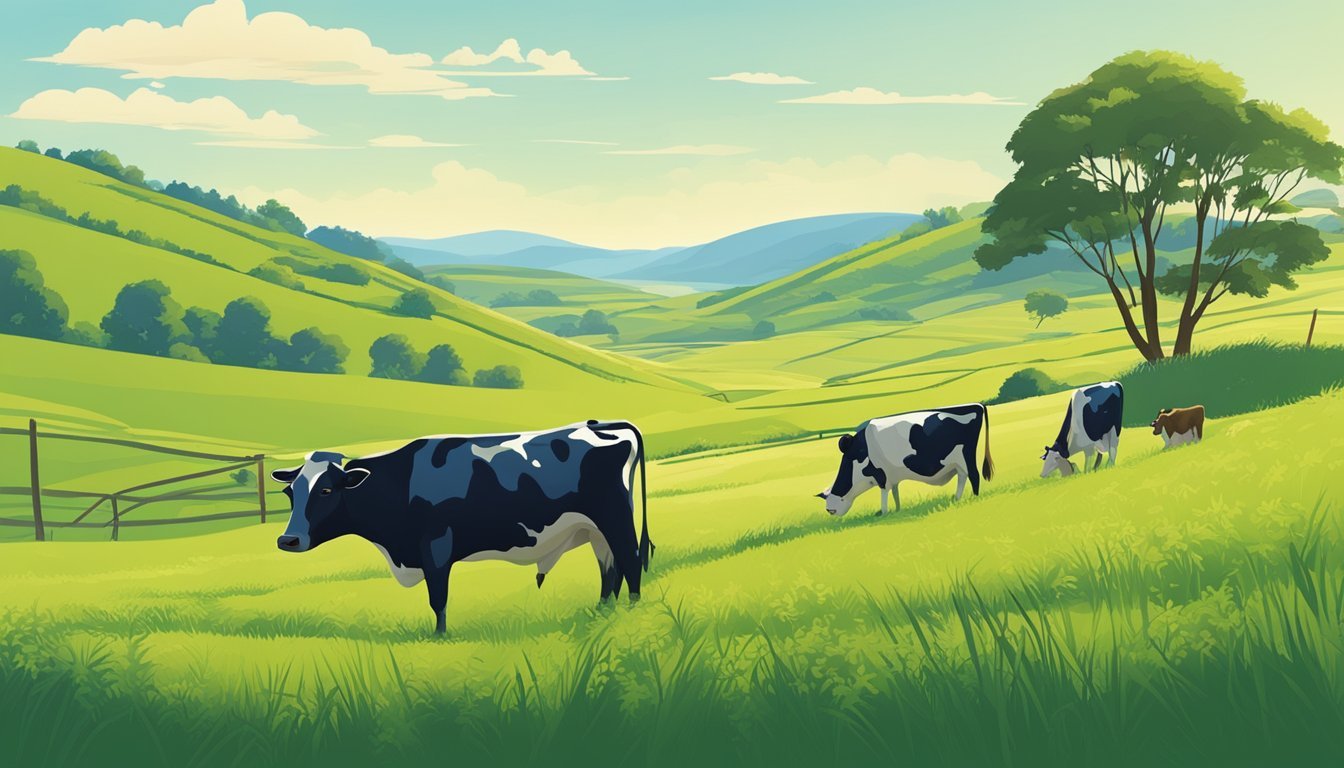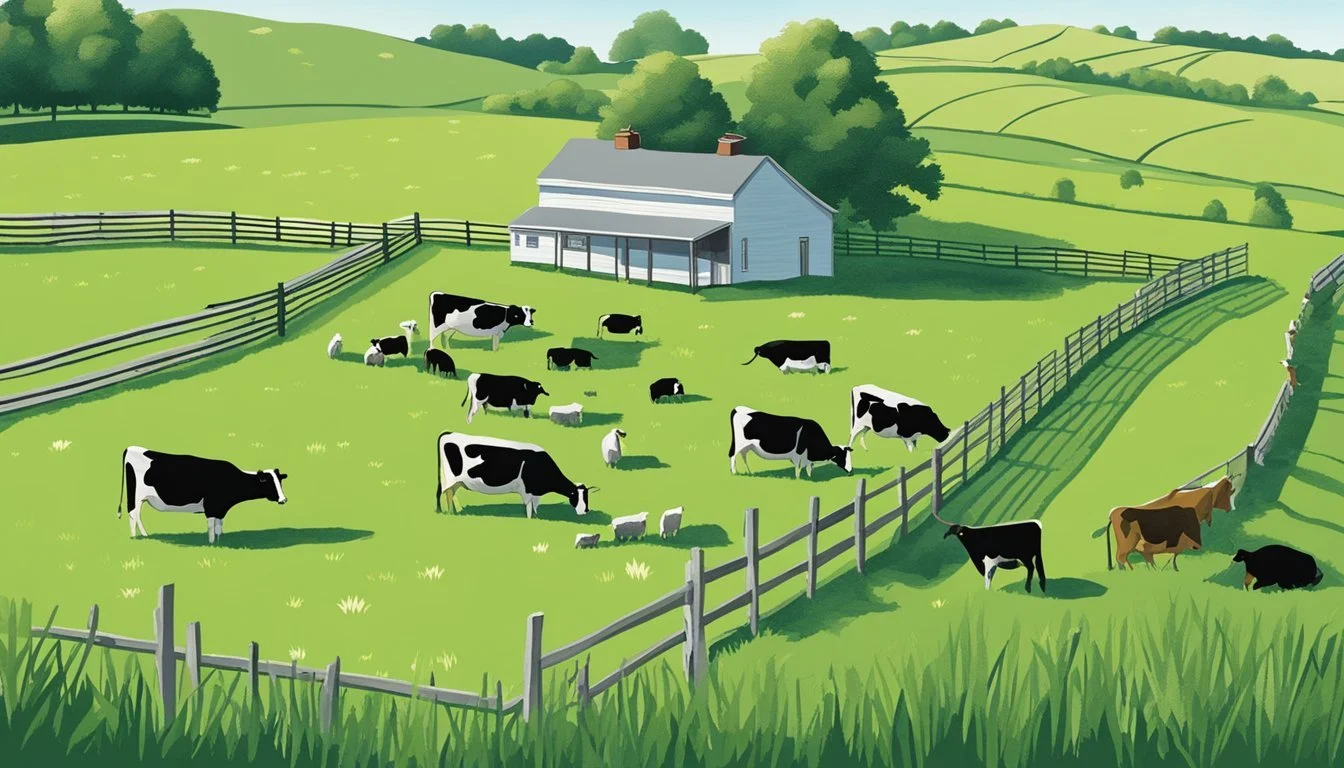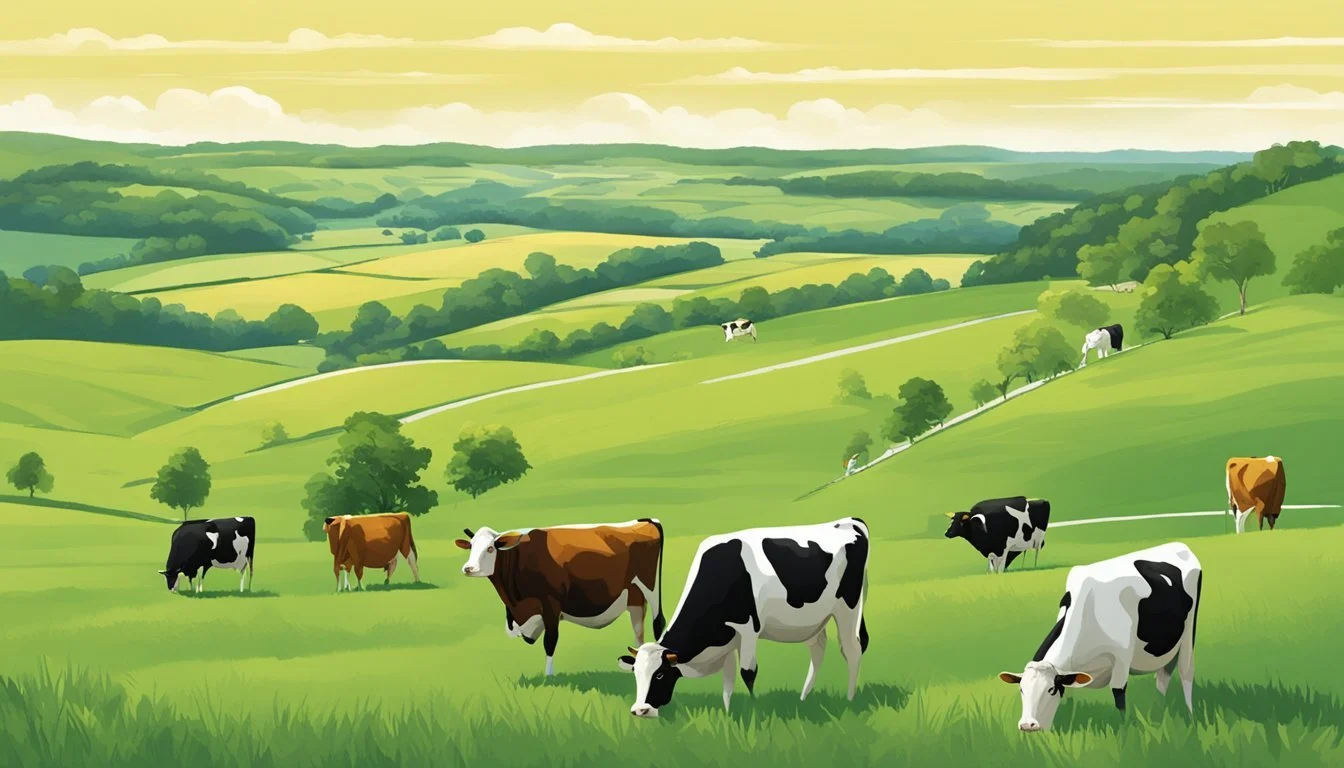Stocking Rate Maryland
Determining Optimal Cows Per Acre for Your Land
Determining the appropriate stocking rate for pasture in Maryland is a vital aspect of running a sustainable livestock business. The stocking rate, defined as the number of animals per acre that the land can support without causing environmental degradation, varies across different regions and is influenced by factors such as soil type, rainfall, and pasture management practices. Maryland's varying climates and topographies mean that a universal stocking rate is not viable. Instead, farmers need to assess the carrying capacity of their specific property, which is the maximum number of cows the acreage can support year-round.
The concept of carrying capacity is fundamental in preventing overgrazing, which can lead to soil erosion and reduced pasture productivity. In Maryland, experienced producers account for the quality of pasture and forage availability when calculating the number of cows per acre their land can sustain. For instance, well-maintained pastures with a mix of orchardgrass and ladino clover may yield significantly more biomass, translating into a higher stocking rate compared to less fertile pastures. An irrigated pasture in Maryland will also have a different carrying capacity than unirrigated rangelands, emphasizing the importance of local conditions in livestock management.
An accurate evaluation of pasture resources ensures livestock ventures in Maryland remain profitable and environmentally sustainable. It requires a balance between the demands of the livestock and the ability of the pasture to meet those needs. Through prudent pasture management and an understanding of the unique aspects of their land, Maryland farmers can establish stocking rates that support healthy cattle while maintaining the long-term viability of their pastures.
Understanding Stocking Rate
In managing pasture lands, it's vital to recognize how many cows a property can sustain without causing overgrazing. This necessity underpins the relevance of understanding stocking rate dynamics thoroughly.
Definition of Stocking Rate
Stocking rate is the density of livestock units allocated per area of land over a specified period. Specifically, an Animal Unit (AU) typically represents a 1,000-lb cow with or without a young calf, and stocking rate is often measured in Animal Unit Months (AUM) or Animal Unit Years (AUY).
Importance of Accurate Stocking
Accurate stocking is essential for sustainable pasture management. It helps ensure that forage is consumed at a rate commensurate with its growth, preventing land degradation. It also directly influences the health and productivity of the cattle.
Calculating Stocking Rates
To calculate stocking rates, one needs the total land area, the number of animal units, and the grazing season length. For example:
Total land area (acres) ÷ [(number of AUs) x (grazing months)] = acres per AUM
Using this formula, a producer with 50 cows, each considered as one AU on 200 acres for a year (12 months), would have a stocking rate of 0.33 acres per AUM or 4 acres per AUY.
Number of Cows (AU) Land Area (acres) Grazing Period (months) Stocking Rate (acres/AUM) 50 200 12 0.33
Stocking Rate vs. Carrying Capacity
Stocking rate should not be confused with carrying capacity, which is the maximum number of animals the land can support indefinitely. While stocking rate is planned usage, carrying capacity is the land's limit to support cattle without causing damage to the vegetation or soil.
Basics of Forage Management
Forage management is critical for maximizing the productivity of grasslands and supporting the desired livestock units. Maryland's diverse climate and soil conditions necessitate a specific approach to forage plant selection and yield measurement to balance production with livestock demand.
Types of Forage Plants
Forage plants can be classified into two main groups: grasses and legumes. Grasses like rye and Bermuda grass are commonly utilized for their high yield and adaptability to Maryland's soils. Legumes, such as clover and alfalfa, are valued for their high protein content and ability to fix nitrogen in the soil, improving forage quality and reducing the need for fertilization.
Measuring Forage Yield
Forage yield is typically measured in terms of dry matter per acre. Reliable measurement involves sampling the forage mass and calculating the dry matter yield, considering seasonal variations and different growth stages. This information is crucial in determining the carrying capacity of the land and ensuring that the stocking rate does not exceed what the pasture can support over time.
Balancing Forage Production and Demand
Establishing a balance between forage production and livestock demand is imperative. This requires an understanding of the annual forage production cycle and the livestock’s forage requirements throughout the year. Stocking rates usually depend on the quality and quantity of available forage, with adjustments made to account for seasonal fluctuations in forage production.
Implementing Rotational Grazing
Rotational grazing is a practice that involves moving livestock between pasture sections to allow forage plants time to recover and regrow. This method enhances forage yield and quality by preventing overgrazing and promoting uniform forage utilization. Properly implemented, rotational grazing can improve the sustainability and productivity of Maryland's grasslands.
Animal Nutrition and Body Weight
When considering stocking rates in Maryland, it's crucial to understand the relationship between an animal's nutrition, body weight, and how these factors impact the capacity of a property to support a particular number of cows per acre.
Nutritional Requirements of Livestock
Livestock, like cattle, require a balanced diet that provides sufficient energy, protein, vitamins, and minerals. The daily dry matter intake of high-quality forage and grain generally ranges from 2-3% of an animal’s body weight. For instance, young, developing, pregnant, or actively working animals have greater nutritional needs, oftentimes at the upper range of this requirement.
Body Weight and Stocking Decisions
An animal’s body weight significantly influences stocking decisions as it dictates the quantity of forage needed. For example, one average-sized cow (1,200 lbs) would typically need 15-18 acres of annual rangelands in some areas within Maryland. Decisions on stocking rates must therefore take into account the average body weight of the herd to avoid overgrazing and land degradation.
Supplemental Feeding Strategies
When natural forage is insufficient—due to seasonal changes or poor pasture quality—supplemental feed becomes necessary. Strategies include providing:
Roughage: Such as hay to complement grazing.
Protein supplements: Essential for the development and maintenance of body tissues.
Mineral supplements: To avoid deficiencies that can impact livestock health and productivity.
Employing these strategies helps maintain an optimal balance between the animals' nutrition and the carrying capacity of the land.
Impact of Climate and Soil
The stocking rate in Maryland is significantly influenced by climate and soil conditions, impacting forage growth, soil fertility, and susceptibility to soil compaction. These factors dictate how many cows an acre can sustainably support.
Climate Influence on Forage Growth
Climate in Maryland varies, yet it tends to produce ample forage for livestock due to its moderate temperatures and sufficient precipitation. However, recent shifts in the climate, marked by higher average temperatures and more intense storms, have altered growing seasons. Increased precipitation may lead to greater forage yield, but it also raises the risk of soil erosion and nutrient runoff. Extended growing seasons can potentially prolong the forage availability for grazing but may also demand adjustments in grazing management to avoid overuse during vulnerable periods.
Soil Characteristics and Fertility
The fertility of Maryland's soils is a critical determinant for forage capacity. A fertility program that includes proper nitrogen application is essential for maintaining robust forage growth. Maryland’s diverse soil types require targeted fertility programs:
Loamy soils typically have good fertility and drainage, requiring standard fertility management.
Clay-rich soils, while fertile, may necessitate additional amendments for improved structure.
Sandy soils often require more frequent fertility inputs due to lower nutrient retention.
Allocating resources to maintain and improve soil fertility is essential for sustaining an ideal forage production that supports the desired stocking rate.
Managing Soil Compaction
Heavy grazing can lead to soil compaction, which inhibits root growth and reduces forage productivity. This is often exacerbated by wet weather and heavy machinery. To manage soil compaction:
Avoid grazing on wet soils when possible.
Implement rotational grazing to allow for soil recovery.
Use aeration techniques in compacted areas to improve water infiltration and root penetration.
Identifying and alleviating compaction is paramount to maintaining soil health and forage availability for grazing, therefore influencing the stocking rate one's property can support.
Grazing Management Techniques
Effective grazing management techniques are critical for maintaining pasture health and ensuring that the land can support the desired number of cows per acre. These techniques revolve around managing grazing intensity, optimizing grazing efficiency, and allowing for adequate pasture rest and regrowth.
Intensive vs. Extensive Grazing
Intensive grazing involves managing a high stock density on a small land area for a short period, followed by moving the livestock to allow the grazed area to recover. This practice often utilizes smaller paddocks within a larger grazing system. On the other hand, extensive grazing is a more traditional approach where animals graze across large areas with lower stock density and less frequent rotation.
Intensive Grazing:
Involves multiple paddocks to rotate livestock frequently.
Increases grazing efficiency, and may enhance forage regrowth.
Extensive Grazing:
Lower stock density over larger areas.
Less labor-intensive but can be less efficient in forage utilization.
Optimizing Grazing Efficiency
Grazing efficiency is maximized when cows consume a high proportion of the forage produced without adversely affecting future growth. Techniques to improve grazing efficiency include:
Adjusting stocking rates to balance forage supply with livestock demand.
Using cross-fencing to create paddocks that concentrate grazing in target areas.
Employing grazing practices that match animal intake with peak forage quality.
Pasture Rest and Regrowth
Rest periods are critical to allow pastures to recover and regenerate. The key is to balance grazing pressure with adequate rest to promote:
Regrowth: Ensures sustained forage production throughout the grazing season.
Soil health: Reduces soil compaction and allows for natural nutrient cycling.
Proper rest periods vary depending on grass species, soil type, and climate conditions.
By implementing strategic grazing management techniques, Maryland farmers can support an appropriate number of cows per acre, improving the sustainability and productivity of their grazing systems.
Diverse Livestock Systems
In Maryland's varied agricultural landscape, integrating multi-species into grazing systems can optimize pasture usage and enhance productivity. Careful management is key to support a sustainable stocking rate.
Multi-Species Grazing Benefits
Multi-species grazing involves different animals, such as cattle, sheep, and goats, sharing pastures either simultaneously or sequentially. This approach can lead to more efficient use of forages as different species prefer different plants and have varying grazing patterns. Horses, for instance, graze grass close to the ground, cattle are less selective, while sheep and goats prefer forbs and brush, respectively. The diversity in diet reduces the parasite load since many parasites are host-specific, improving overall herd health.
Key points for multi-species grazing:
Optimized pasture utilization: Different animals consume different plant species.
Parasite management: Reduced parasite load due to species-specific parasites.
Improved forage growth: Non-preferred plant species by one animal can be consumed by another.
Stocking Sheep, Goats, and Other Livestock
When calculating stocking rates for sheep, goats, and other livestock, it's important to consider the animal unit equivalent (AUE). An AUE equates different types of livestock to cattle based on their relative forage intake. For instance, one AUE is roughly equivalent to one mature cow of approximately 1,000 pounds, whereas sheep and goats have lower AUE values. Inclusion of chickens can further complement a pasture-based system by consuming insects and providing natural fertilizer, although they contribute less to the AUE metric due to their minimal forage consumption.
Example AUE values:
Cattle: 1.0 AUE
Horse: 1.25 AUE
Sheep: 0.1 AUE
Goat: 0.15 AUE
Chicken: negligible impact on AUE
By factoring in AUE, livestock producers can better determine the mixed-species stocking rate that their pastures can sustainably support. It's crucial to adjust the rates according to forage availability and the productive capacity of the land.
Monitoring and Adjustment
To sustain a healthy balance on a property in Maryland, ongoing assessment of pasture is crucial. This involves regular evaluation of forage availability and management practices to prevent overgrazing and to optimize grazing days.
Conducting a Pasture Inventory
A comprehensive pasture inventory should be conducted to quantify forage availability. This process involves mapping out the pasture and documenting:
Types of forage present
Amount of forage production
Pasture quality and condition
Collecting this data allows for the calculation of a baseline for grazing days available and informs whether supplementary hay will be necessary during leaner months or in the event of overgrazing.
Making Informed Management Decisions
Armed with the data from the inventory, farmers can make informed management decisions. These decisions might include:
Rotational grazing schedules to allow for pasture recovery
Whether to reduce herd size to match forage availability
Introducing different forage types to improve nutrition and pasture quality
It is critical to adjust stocking rates based on actual forage production and not mere estimates to maintain a sustainable grazing system and prevent pasture degradation.
Regulations and Extension Services
In Maryland, livestock producers need to be aware of local regulations while they can greatly benefit from the insights offered by extension services. Both are integral when it comes to maximizing productivity and maintaining compliance over time.
Understanding Local Livestock Laws
Local livestock laws in Maryland dictate the permissible number of animals per acre on a property, which affects the stocking rate. Producers must comply with these laws to avoid penalties and ensure the sustainability of their pastures. Specific location-based regulations can be obtained from county zoning boards or local Department of Agriculture offices. These laws are enacted to reflect the unique environmental conditions and agricultural practices of different areas within the state.
Leveraging Extension Educator Knowledge
Extension educators are valuable resources for livestock producers. They offer advice grounded in the latest research, tailored to the specific needs of the region and individual farms. By consulting with an extension educator, a livestock producer can gain a better understanding of:
Optimal stocking rates specific to their Maryland location
Animal nutrition requirements and pasture management practices
Strategies for forage improvement and drought management
Periodic workshops and online materials available at different times throughout the year
Producers can find contacts for Maryland extension educators through university websites or local extension offices, ensuring they have access to relevant, timely, and research-backed information.
Financial Considerations
In assessing financial considerations, property owners need to analyze the economic impact of stocking rates and the cost associated with feeding strategies. These factors play critical roles in determining the profitability and sustainability of livestock operations.
Economic Impact of Stocking Rates
A property's profitability is intrinsically tied to its stocking rate. This is the number of livestock units that can be sustainably supported per acre during the grazing season. An optimal stocking rate balances livestock production with forage availability, impacting revenues directly. Overstocking can lead to overgrazing, soil degradation, and increased feed costs over time, as natural forage becomes insufficient. Conversely, understocking may result in underutilized resources, failing to maximize the economic potential of the land.
Cost Analysis of Feeding Strategies
Feeding strategies and their costs vary with stocking rates. As the stocking rate increases, the reliance on supplemental feed typically rises, especially during times when forage is less productive. A cost analysis should consider:
Supplemental Feed Costs: These may escalate as the grazing season progresses if pastures are not adequately maintained.
Forage Production Costs: The investment in maintaining productive pastures includes soil amendment, reseeding, and possibly irrigation, all of which contribute to the overall cost.
The timing of feed purchases and resource allocation should be aligned with the grazing season to optimize costs. Management practices must incorporate regular monitoring and adjustment of stocking rates to respond to changing environmental conditions and forage availability. This prudent approach helps to avoid costly imbalances between feed demand and supply.
Effective planning and financial management are vital in ensuring that the property can support the livestock throughout the time they are on the pasture, while maintaining soil health and sustainability for future grazing seasons.
Future Trends in Forage and Grazing
As the field of agriculture evolves, forage cultivation and grazing methodologies are anticipated to undergo significant advancements. These changes aim at enhancing yield, sustainability, and overall grazing management to optimize the number of cows per acre that a property in Maryland can support.
Innovations in Forage Cultivation
Forage cultivation is set to benefit from technological advancements in plant breeding. Researchers are developing plant species that exhibit improved resilience to climate change and can thrive in diverse soil conditions. Genetically improved forages are anticipated to deliver higher yields and offer better nutritional value, significantly impacting stocking rates by allowing for more cows to be supported per acre.
Development of cultivation techniques focuses on suppressing undesirable plants, thereby improving pasture structure and quality. Techniques such as crop rotation and precision farming will aid in maintaining soil health and decreasing the prevalence of invasive species. These practices are designed to foster a more productive grazing environment, enhancing the overall capacity of the land to support grazing livestock.
Advancements in Grazing Methodologies
Grazing management is also expected to see substantial progress. One major trend is the adoption of rotational grazing systems, which allow pastures to recover and regrow between grazing cycles. This system can potentially increase the carrying capacity of the pasture.
Advanced grazing planning software will enable farmers and ranchers to monitor grazing patterns and pasture health with greater accuracy. This technology offers real-time data, helping optimize stocking rates to ensure that forage is neither overutilized nor underutilized.
In conclusion, improved forage species and innovative grazing practices will play essential roles in shaping how land in Maryland can be used more effectively for supporting livestock, ensuring that farming remains both productive and sustainable.






